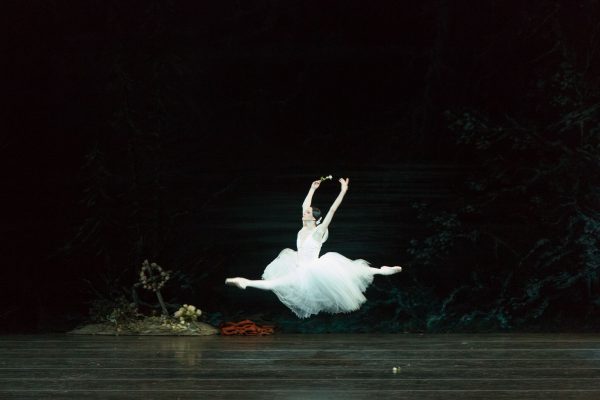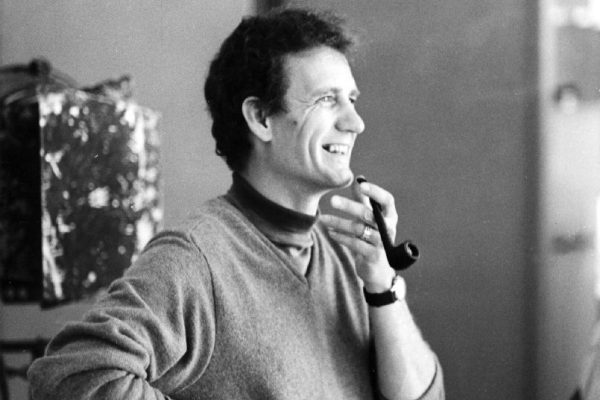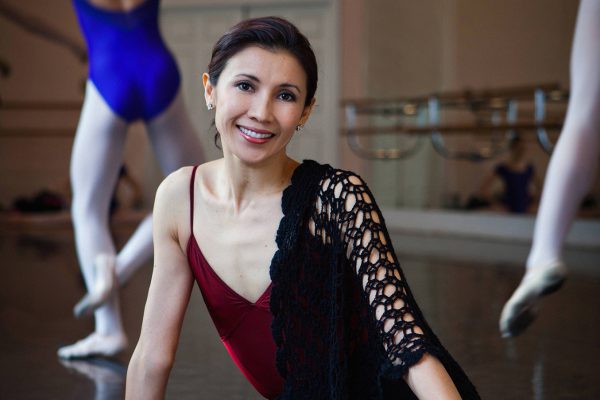Giselle is a straightforward story ballet. Its choreography is filled with mime, emotion and corresponding musical composition, sets and costumes. Together, these elements work to pull the viewer through the telling of love, betrayal, madness, despair and forgiveness. The supernatural Wilis, the ghostly sylph-like spirits of young maidens in Act Two, are otherworldly but, otherwise, Giselle is a sad love story as familiar as any other. The ballet was first staged in 1841, making the selected details of the production — dramatic sequencing, chosen time period, design, style — aspects to be judged. But, it’s really the performance of the company that allows for contemporary interpretation.
Vancouver-based Coastal City Ballet, a repertory company founded in 2011, brought Giselle to the Playhouse for one sold-out evening on May 19. The company is to present the ballet again in Surrey on June 9, where, as of publication, tickets are almost sold-out. In and around Vancouver, there are many opportunities for training but few opportunities for performing, especially in classical dance. This is where Coastal City Ballet has found its niche and where, by bringing classical story ballets to the stage, it is finding success.
Staging a romantic classic like Giselle is no easy feat. It follows closely the very specific and illustrative music by French composer Adolphe Adam, and choreographer Irene Schneider does an impressive job of working with the score to create scenes that challenge the various levels of dance ability within the company. This is the sixth time Schneider has returned to Vancouver to stage a story ballet for the company. She comes with years of experience and a professional background dancing with the Stuttgart Ballet and under director John Neumeier at Ballet Frankfurt as well as over three decades of teaching and directing at various academies in Germany. In Coastal City Ballet’s production, Schneider and the artistic team worked to bring everyone to one level while challenging soloists with the chops just enough.
There is a range of ability onstage, though. We see this briefly within the corps when in certain moments uniformity is broken by, for example, a dancer behind the music or an out-of-place limb. In Act Two, many, but not all of the Wilis, achieved the lowered gaze recognizable by caved-in collarbones and rigidity. We heard a lot from their shoes during the “flattened” arabesque hops — that iconic image of rows of identical ballerinas in white romantic tutus moving across the stage — but this was an intimate theatre and some of the dancers are still students. I imagine that to many in attendance the stomping sound made sense, or maybe they were too distracted and enamoured by the beauty of many identical, white-clad bodies moving together. The Queen of the Wilis, danced on this evening by local Kira Radosevic, stood out physically for being a head taller than her league of ghosts. Radosevic nailed a severe interpretation of her tragic leading role. It is the Queen of the Wilis who, in Act Two, forces young men to dance to their deaths.
Young men are more of a rare commodity than women in classical ballet, and Artistic Director Li Yaming has made a name for himself in recruiting and instructing male ballet dancers, especially those late to the game. The production’s principal male role, Albrecht, was danced in Vancouver by Brazil-born Diego Ramalho, who was a breakdancer before Yaming scouted him, having him join the company in 2013. Ramalho is full of passion and commitment but, technically speaking, next to his female colleagues on the stage, many of whom have been doing ballet most of their lives, he can’t compare. His landing of jumps, for example, need absorption and though the role asks for dramatic contributions, there’s a subtlety of expression missing in his performance. In general, all the males lacked finesse, though not for lack of trying. It was actually their trying that got them into trouble: overexerted effort prevented many from neat landings and smooth transitions — a critique I could never say for the evening’s star performance by Brazilian Ana Paula Oiolo, whose performance on this evening was truly a treat.
When I think of the most demanding role of a principal ballerina Swan Lake’s Odette and Odile come to mind, but Giselle is equally, if not more, demanding as far as artistry is concerned. From a blossoming village girl, euphoric in love, to an ethereal essence of weightlessness by her gravesite, the role of Giselle expresses the spectrum of emotion, and Oiolo was stunning throughout. Playing a young girl in love can easily teeter into uncomfortable exaggeration but this twenty-eight year-old finds the right amount of shyness and flirtation, then absolute infatuation, before unravelling to that delicate brink between madness and despair. Oiolo demonstrated perfect technical control, moving through sustained développés and penchés with ease as well as the more quick and fancy footwork of the grape harvest scene in Act One.
With all the great contemporary ballet and dance on offer in this city, it’s easy to forget the role classical story ballets play for the general public. Sitting around me in the theatre was a senior woman who loves going to the ballet and last saw Giselle danced by the National Ballet in Toronto over a decade ago; behind me was a party of women who had no idea what the story was but were there to cheer on a friend’s son who played Giselle’s jealous lover, Hilarion; and down the row was the daughter of Kelly Douglas, who I imagine knows the ballet intimately: her mother plays Bathilde, Albrecht’s betrothed. The ballet is known for bringing all sorts to its stages, and thanks to Coastal City Ballet, many in and around Vancouver are getting to see the classics up close. Slight technical and performance details aside, this company delivers a quality evening out at the ballet.





